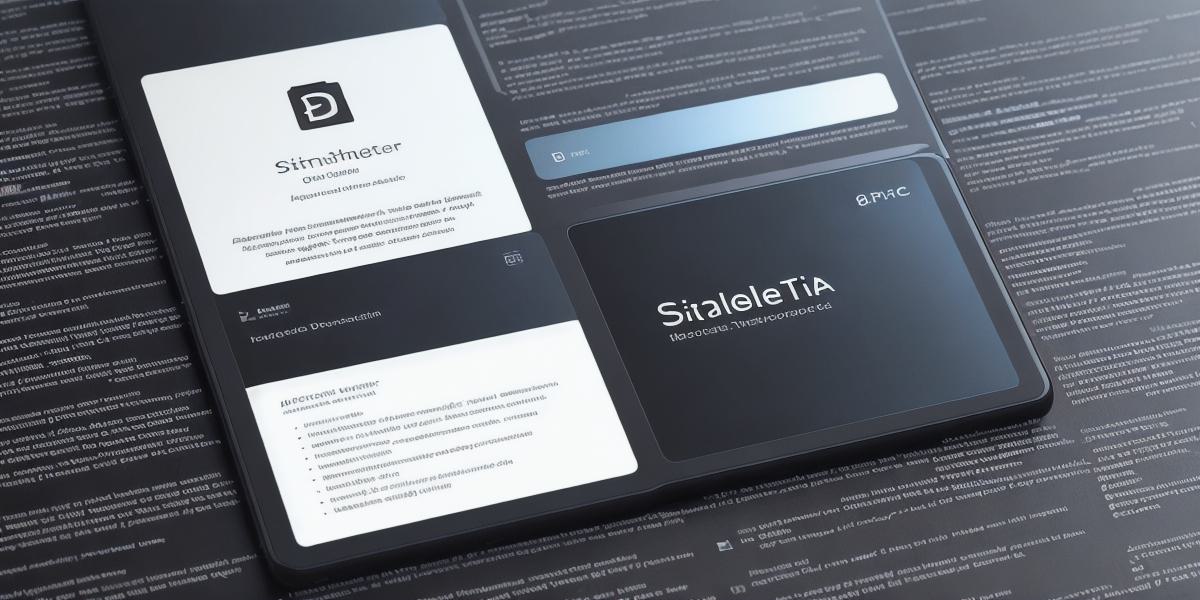Introduction
Web 3.0 is the next evolution in the internet’s development, with decentralized applications (dApps) and blockchain technology at its core. It promises a more secure, transparent, and open system where users have greater control over their data and interactions. In this article, we will explore the definition of Web 3.0, its key features, and real-life examples to help you understand how it’s shaping the future of technology.
Definition of Web 3.0
Web 3.0 is a decentralized version of the internet that uses blockchain technology to store and transfer data. It allows users to interact with dApps, which are applications that run on a blockchain network rather than a central server. Unlike traditional web applications that rely on centralized servers, Web 3.0 is distributed across a network of nodes, making it more secure and resilient.
Key Features of Web 3.0
Decentralization
Web 3.0 relies on decentralization to provide greater security and control for users. Rather than relying on a central server to store and process data, Web 3.0 uses a network of nodes to distribute data across the internet. This makes it much harder for hackers to compromise the system, as they would need to attack multiple nodes to gain access.
Openness
Web 3.0 is open to everyone, regardless of their location or technical expertise. This means that anyone can participate in the network and contribute to its development. It also means that data on the blockchain is publicly available, which promotes transparency and accountability.
Smart Contracts
Smart contracts are self-executing agreements with the terms of the agreement between buyer and seller being directly written into lines of code. They enable automated execution of digital assets, including buying and selling goods or services. They also allow for more secure and efficient transactions, as they eliminate intermediaries and automate many of the processes involved in traditional contracts.
Distributed Storage

Web 3.0 uses distributed storage to store data on the blockchain. This means that data is stored across multiple nodes in the network, rather than relying on a central server. This provides greater security and resilience, as if one node fails, the others can continue to function normally.
Interoperability
Web 3.0 allows for interoperability between different dApps and platforms, making it easier for users to access and use different services. This means that users can easily move their data from one platform to another, without having to start over.
Real-Life Examples of Web 3.0 in Action
Decentralized Finance (DeFi)
Decentralized finance is a financial system built on blockchain technology that allows for peer-to-peer lending, borrowing, and trading without intermediaries. DeFi applications like Uniswap, Aave, and Compound are built on the Ethereum blockchain and provide users with greater control over their finances. They also offer more competitive interest rates than traditional banks.
Supply Chain Management
Blockchain technology is being used to improve supply chain management by providing greater transparency and accountability. For example, Walmart has implemented a blockchain-based system that allows customers to track the origin of their food products, providing greater information about where their food comes from and how it was produced.
Digital Identity Management
Web 3.0 is also being used to improve digital identity management. By using blockchain technology to store and manage identity data, users have greater control over their personal information and can easily share it with different services without having to re-enter it every time.
Conclusion

Web 3.0 is the future of the internet, and it’s already making a big impact on the world. It provides a more secure, transparent, and open system where users have greater control over their data and interactions. As Web 3.0 continues to evolve
